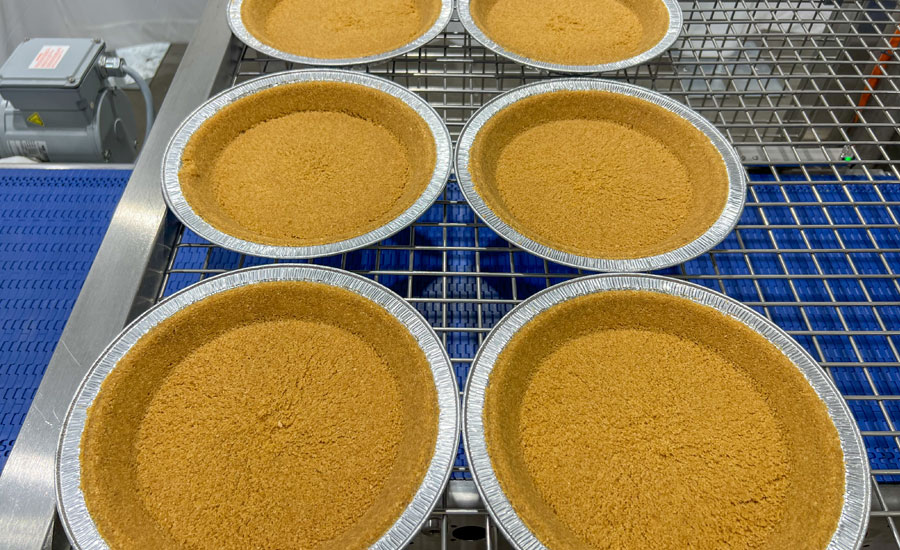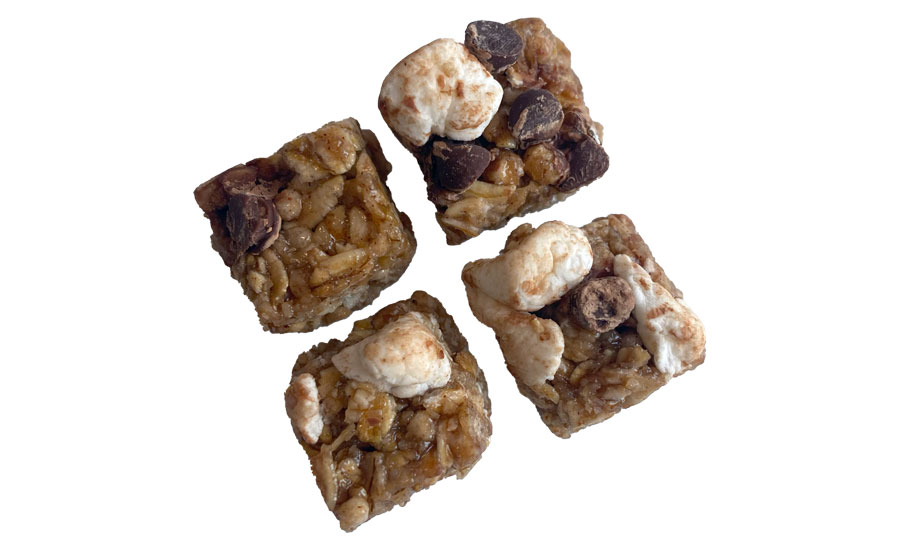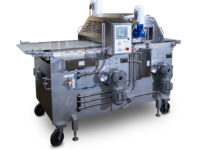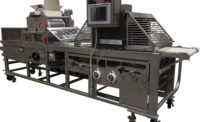Slicing and portioning equipment must offer efficiency, sanitation
Without the right capabilities, such gear won’t cut it for snack and bakery producers

Courtesy of Grote
The Bottom Line:
- Automation and other labor-reducing features are in demand
- Producers are keenly interested in efficiency of such equipment
- Ease of cleaning and sanitation also are required features
Greater efficiency, ease of sanitation, the ability to reduce labor, and more automation—along with the ability to download data—top the list of features and benefits that snack food and bakery companies are seeking from slicing, cutting, and portioning equipment.
Greyston Bakery makes brownies that have been sold to venues ranging from Whole Foods, to airline foodservice operations, to Ben and Jerry’s—the company makes brownie pieces inserted into the brand’s ice cream worldwide. Efficiency in terms of particularly waste management probably tops the list of priorities for the company, says Kevin McGahren, general manager.
As a for-profit company owned by a not-for-profit foundation, which has a mission to create jobs for the formerly incarcerated and others who face employment-related challenges, “We do have a lot more manual work than most bakeries that automate everything,” he says. “At the same time, in order to keep costs down, any machinery that can help with efficiency and waste, while maintaining employment, that’s a win-win.”
In addition to the formerly incarcerated, employees include everyone from the unhoused, to those with past drug addiction issues, to immigrants lacking skills—or, in some cases, English fluency. “We exist to provide opportunities to people who have barriers to employment,” he adds.
Greyston, which has rolled out dark chocolate cherry and cashew caramel brownie flavors in the past year, has purchased two ultrasonic cutters that will provide a more consistent cut with less waste and greater efficiency, and the company has added a robotic arm to its depositing operation, which loads trays onto a conveyor using suction cups and magnets onto which batter is deposited, McGahren says. “That didn’t replace a job; it just made one job easier and more effective and efficient,” he says, with greater throughout from the robotic arm.
With about 100 employees, Greyston has very manual processes for individually packed items and is currently looking for weighing solutions for its artisan bakery lines, McGahren says. “That’s our next frontier,” he says. “That’s how we think about it: what’s efficient, what’s going to minimize waste, and also ease of operation, given our labor pool. We want to make sure these are things we can handle internally.”
Customers of Grote Company are asking about the ability to collect data from their equipment, says Dan Friend, lifecycle leader. “What can they do with their data? How can they use it for maintenance, operations and continuous improvement?” he says. “They’re working to be connected to all of their equipment.” But that leads to questions about cybersecurity, he adds. “Everybody wants to be sure their information is not out there [publicly accessible]. We have a couple platforms to maintain security and elevate their comfort level.”
Grote also has responded to requests for educational videos that demonstrate how to not only set up machines but also proper techniques for how the equipment should operate, how to troubleshoot, and how to undertake sanitation routines, Friend says. “We also do on-site training, here at Grote or at the customers’ location,” he says. “There’s a lot of high turnover and other resources challenges that our customers are faced with right now.”
To ensure a solid customer relationship throughout a product’s timeline, Grote has created a “lifecycle initiative” that supports machinery from purchasing through commissioning and eventually to obsolescence, Friend says. “It’s strictly focused on building the customer relationship, to maintain good expectations, have the customer better trained, and a person to go to for real-time monitoring of the equipment, and help them do predictive maintenance,” he says.




Courtesy of FoodTools
Trevor Bundy, regional sales manager at FoodTools, says his customers have been asking about technological solutions that ensure machine belts stay centered and on track as the process moves forward, rather than wandering. “With the polyurethane belts, how can we better track the belt on this?” he says. “Polyurethane can slip and slide sometimes. This [custom inline solution the company developed] ensures that does not happen.”

FoodTools customers are also looking for upstream and downstream solutions such as automated cake collaring after the portioning process, as well as inline de-panners beforehand that set the cake up to be cut, both of which the company is developing, Bundy remarks. “Customers came and asked if it’s something we can do,” he says. “We’re going through the processes and talking with the design team and working on released that toward the end of this year.”
At Quantum Technical Services, customers are heavily focused on automation, says Tom Trost, sales manager. “People are hard to retain,” he says. “A big part of that is the feeding of the system. You can store multiple recipes in these machines—different tray sizes. You can just plug in the recipe, and it will be reproducible.”


Courtesy of Egan Food Technologies
Maintenance, sanitation, and labor reductions are also top of mind, Trost relates. “There’s a lot more concern about that since COVID especially, given the employee situation and the struggles people have with that,” he says of the latter.
Customers of Egan Food Technologies are looking for “room to grow” in terms of throughput, as well as machines that are designed for quick changeovers for sanitation and allergen cleaning, says Mike Sherd, managing partner. That includes “quick release conveyor belts and self-tracking so that it’s very easy to take part and clean for sanitation and changeover,” he says.Looking for a reprint of this article?
From high-res PDFs to custom plaques, order your copy today!






